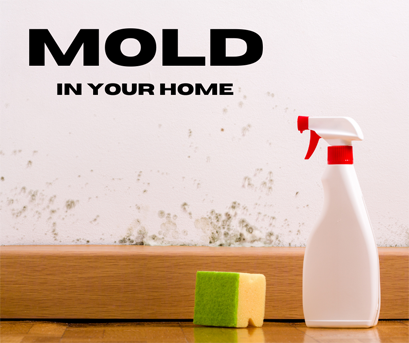Mold in your home
July 8, 2021
Mold is a common allergen, a type of fungus that consists of tiny organisms found almost everywhere. Outdoors, molds play an important role in nature, breaking down dead leaves, plants, and trees. Indoors, mold damages structures and exposes people to a variety of respiratory complications.
Mold is quick to form, developing in just one or two days when exposed to moisture. Mold can be black, white, gray, brown, green, or just about any color. Mold sometimes has an odor often described as “musty” or “earthy.” In the home, mold grows well on paper products, cardboard, ceiling tiles, and wood products. Mold can also grow in dust, paints, wallpaper, insulation, drywall, carpet, fabric, and upholstery.
Mold is typically found outside, but it’s very easy for it to find its way inside the home. Any type of opening, be it a door, a window, an air vent, or a gap in the weather-stripping, can bring the allergen inside. People or pets can also track it inside.
Outdoor mold levels are highest from snowmelt in spring through snow cover in fall. In addition, outdoor mold levels peak after rains and are particularly high in September and October.
For many people, mold exposure causes symptoms similar to those associated with hay fever. Common signs include congestion, sneezing, watery or itchy eyes, irritated skin, sore throat, headache, and wheezing. Not all molds cause allergic reactions, and not everybody who breathes in mold spores will experience symptoms.
If you experience an allergic reaction to mold, taking an over-the-counter antihistamine or decongestant may help alleviate your symptoms. Nasal rinses can also clear your passageways and make it easier to breathe.
Take steps today to prevent mold exposure in your home: close the windows to prevent mold from making its way inside, replace the filter on your air conditioner often, use a dehumidifier to maintain humidity levels between 30% - 50%, fix any leaks in pipes, roofs/ceilings, or windows, and make sure your home (especially the kitchen & bathrooms) are properly ventilated.
Most importantly, if you locate mold in your home, identify the source of the mold and remove it, clean washable surfaces, and take steps to prevent future growth.
